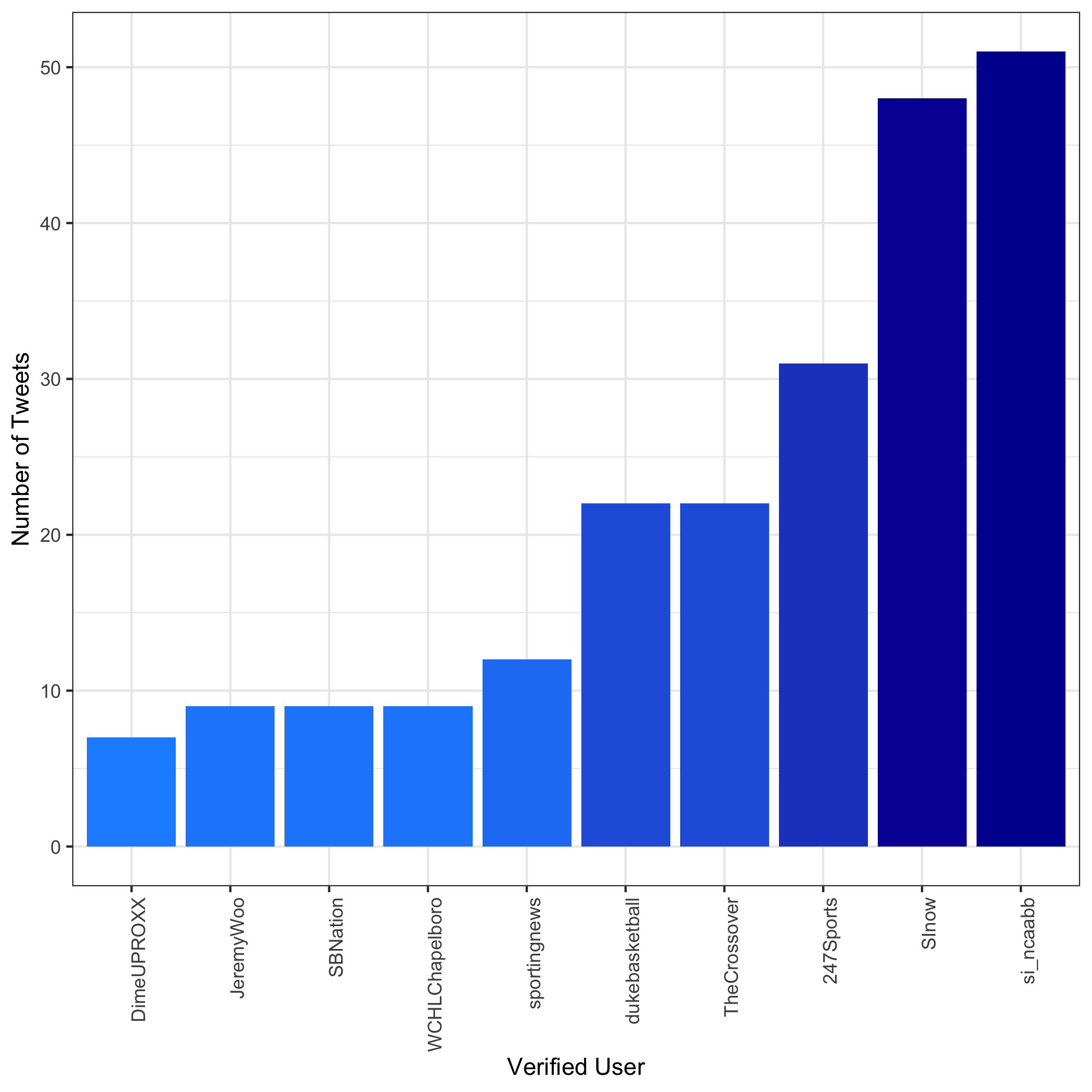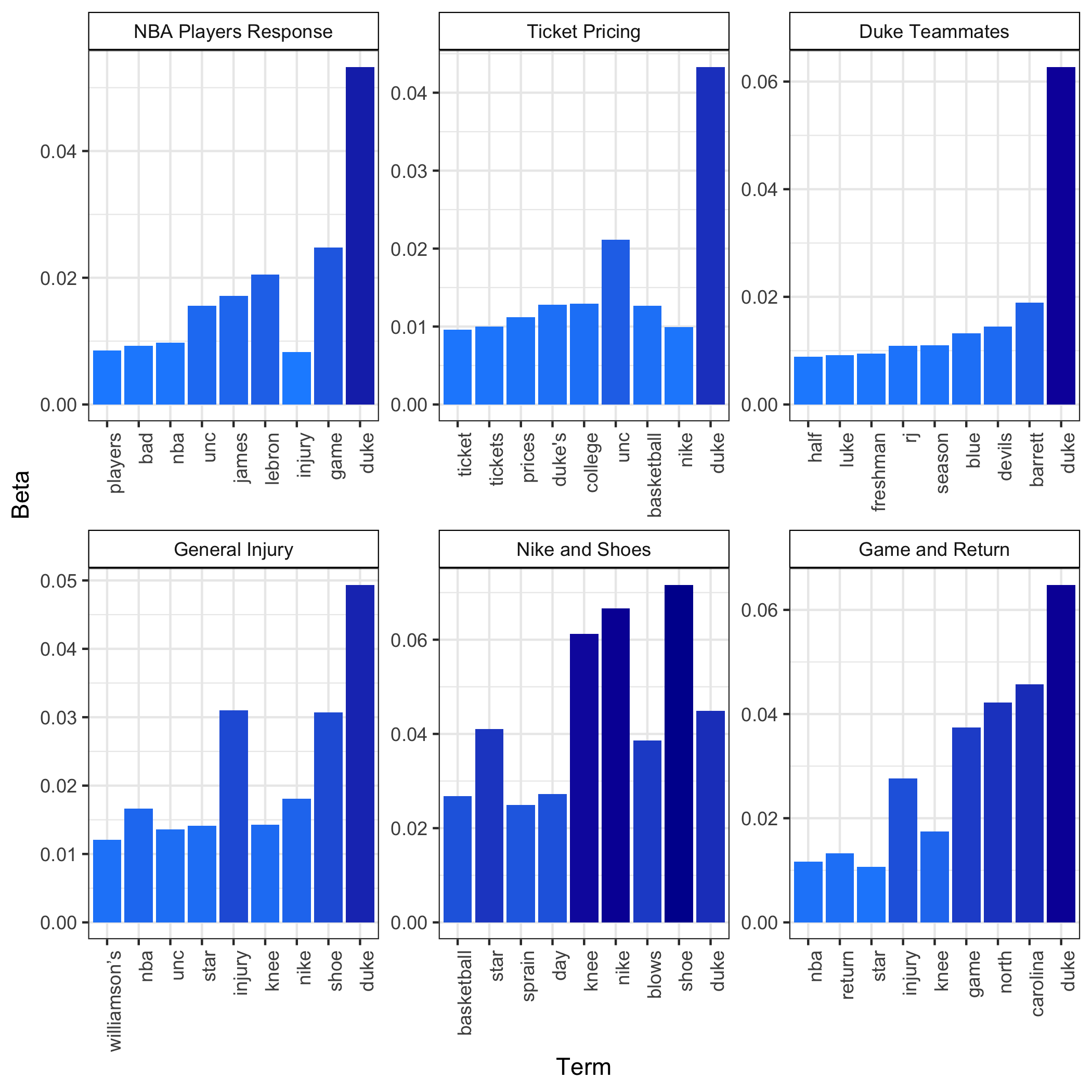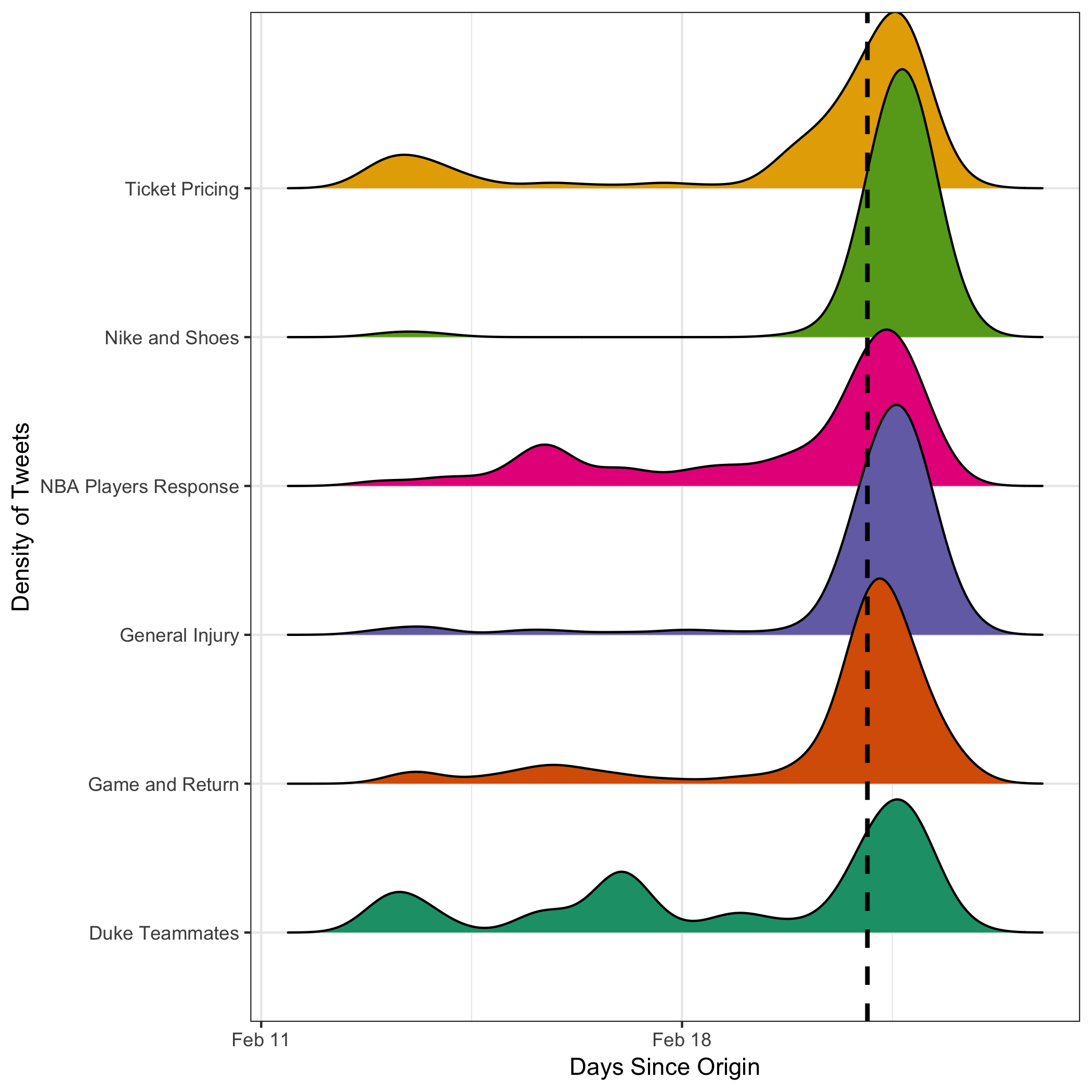In last week’s NCAA basketball game of the week, the UNC Tar Heels (#5) faced off against the Duke Blue Devils (#1). The game had all the makings of a classic: two top five contenders, a widely known rivalry, and top NBA prospects. Tickets to the game met Super Bowl prices fetching, at a minimum, $2,500. While UNC-Duke games typically receive significant national attention, it was Duke’s freshman sensation Zion Williamson who attracted big names like President Barack Obama and recent Oscar winner Spike Lee (finally). As a true Freshman, Zion has taken the sports world by storm, drawing attention for years at this point for his jaw-dropping dunks and tremendous NBA potential.
Unfortunately, not even a full minute into this hyped game, Zion’s Nike PG 2.5 (Oklahoma City Thunder forward Paul George’s signature shoe) exploded out from under him, leaving him to fall awkwardly and sustain a Grade 1 knee sprain. This injury sent shockwaves through sports reporting and led Nike to lose $1.1 billion in stock value. Beyond the quality of Nike shoes, Zion’s injury raised many important questions about college athletics, the NBA’s “one-and-done” rule, and the shamateurism of collegiate athletics.
One question that piqued my interest was how the Twitterverse has reacted to Zion’s injury. As a daily listener of sports radio (especially The Dan Le Batard Show), I became curious about how we could define the conversation surrounding this momentous event.
To study this conversation, I downloaded approximately 1,000 Tweets from Verified Twitter users (a classification typically reserved for journalists, celebrities, or other people of acclaim) and included the words Zion, Williamson, or Duke. For this project I used Mike Kearney’s “rtweet” package, which I highly recommend. These Tweets came between February 12th and 22nd, straddling the game which occurred on February 20th. The breakdown of Tweets is as follows:
Hourly distribution of relevant Tweets from Verified users. Dashed line is drawn at the time of the injury.
As you can see, the number of Tweets dramatically increases following Zion’s injury. Naturally, the question of who most frequently contributed to the conversation interested me. One might expect the large sports news reporting firms to dominate the conversation, but perhaps some more regionally-based reporters might contribute significantly. The following graph plots the 10 most active users in this data:
Verified Users contributing the most to the conversation regarding Zion Williamson before and after his injury.
As expected, the four most active users are relatively large sports reporting agencies, such as Sports Illustrated (SInow) and their affiliated accounts for NCAA basketball (si_ncaabb) and NBA basketball (TheCrossover). Following that, there’s activity by Duke Basketball (dukebasketball). Perhaps unsurprisingly, but rarely considered, local news outlets appear discuss Zion significantly as well, including the flagship radio station for UNC (WCHLChapelboro). The inclusion of Sports Illustrated’s NBA Draft contributor Jeremy Woo’s (JeremyWoo) on this list appears to indicate that perhaps many were considering the impact of the injury on the NBA draft.
However, how can we learn about the discussion with respect to Zion and his injury? In processing these tweets, I removed any tokenized portions of links, Zion, or Williamson. Using the principles of semantic coherence (again, not the most principled), I estimated a Latent Dirichlet Allocation with 6 different topics. The results of this analysis is presented as follows:
Labels are assigned according to commonalities in the words frequently appearing in each topic.
Overall, many of the topics discussed reflect narratives that I heard preceding, during, and following the UNC-Duke game. The first topic reflects a series of discussions wherein NBA players encouraged Zion to hang-up his shoes and prepare for the draft and recognized the unethical treatment of student athletes. Many of the words associated with this topic include “nba”, “lebron, “james”, and “players.” One of the largest voices during this time was LeBron James, who told Zion that he should do what he thought was best for him. Other voices included Utah Jazz guard Donovan Mitchell who said,
“Again let’s remember all the money that went into this game.... and these players get none of it.... and now Zion gets hurt... something has to change.”
Denver Nuggets’ Isaiah Thomas tweeted,
”Let these kids go straight out of HS!!! Too much on the line to be messing with college if you got a legit chance to turn pro. One injury can change somebody career, Zion sit yo ass down lol and we will be ready for you in the big boy league #LookingOutForThePlayers.”
These are NBA players, like LeBron James, who are reacting to Zion’s injury. As such, given these words, this topic seems relevant.
As mentioned, prices for this UNC-Duke game had skyrocketed. ESPN reported that minimum prices were around $2,500 and some tickets were sold for over $10,000. This was a dominant topic of conversation preceding the game and following the game when many expressed compassion for those spending so much without seeing Zion play more than a minute. This topic emerges from the model, where “ticket”, “tickets”, and “prices” frequently occur.
Another topic appears to focus on Zion’s teammates, their importance, and potentially how they may react to the injury. This is evidenced by the inclusion of words such as “rj” and “barrett” in this topic, referring to Duke’s RJ Barrett, another well-known NBA prospect. Certainly, Zion’s injury has shifted additional burden on Barrett to pick up the load, but even before the injury, Barrett was seen as an essential part of the team's success.
A fourth topic seems to focus on the injury in general, frequently focusing on aspects of the injury and its cause, including words like “shoe”, “nike”, “knee” , and “injury.” This, naturally, was a big part of the conversation around Zion.
The fifth topic seems to largely focus upon Nike and the exploding shoe as the most prevalent words were “nike” and “shoe”, with “blows” (as in blow-out) following closely behind. This was certainly a common topic of conversation, leading to discussion about shoe design and engineering.
Finally, the last topic seems to focus in on the influence of the injury on the game and whether he would return. Frequently appearing in this topic are “injury” and “game”, relating these words to how the injury influenced the game. Also appearing in this topic, but no others, is “return”, likely referring to the question of whether or not Zion would have returned to the game.
These topics seem to do a decent job summarizing the discussion surrounding Zion Williamson and his injury. But, how much did the conversation change surrounding his injury? Were certain topics more prevalent after the injury than before? To analyze this, I examine the volume of Tweets assigned to a particular topic over time. This is visualized as follows:
Prevalence of topics over time. Vertical line drawn at time of injury.
Unsurprisingly, Tweets regarding ticket price and Zion’s Duke Teammates were fairly prevalent before the game. This makes sense, as the discussion preceding the game was largely about ticket price and the importance of RJ Barrett as a complement to Zion.
Naturally, there’s a large uptick in the Nike and shoes topic following the injury, which makes sense at it would almost certainly would not have merited discussion prior. The same is said can be said for the injury and game and return topics. Interestingly, there’s not a huge change in the NBA player response topic. While some are certainly discussing Zion prior to the game, there is an uptick in discussion following the injury.
At the time of this post, the discussion over whether Zion should return or should prepare for the draft is still raging. On Friday, NBA commissioner Adam Silver indicated an interest in removing the one-and-done rule, allowing would-be student athletes to join the NBA where they could immediately profit off their labor and likeness without spending a year “playing school.”








